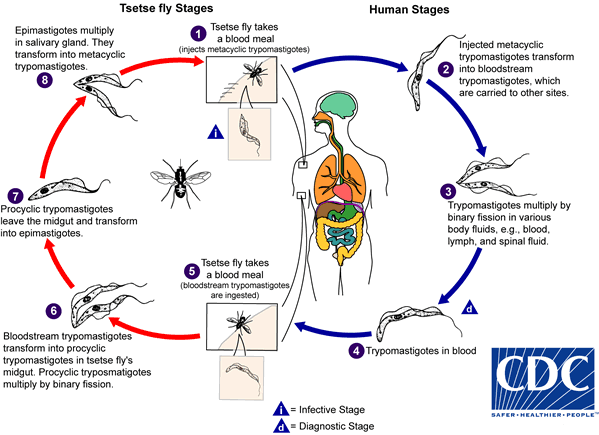REFLECTION
Today, the class made progress on the service-learning project. We picked Behavioral Health as the first topic. In addition, we jotted down factors that will be included in the project like the definition, a creative skit/case study, resources, sign & symptoms, treatment, and environment. We also appointed who will be getting flyers and brochures done. Also, concluded that everyone will be involved in research, powerpoint and of course presentation. As of date, this is all that was discussed in class regarding the service project.
How Do We Get Affected?
Well, the fly injects her mouth to our skin, sucks the blood as some of the parasites called trypomastigotes multiply and travel to the bloodstream, tissues, and lymph. These parasites last from months to years. Trypanosoma gambiene is characterized by 3 stages: two in procyclic trypomastigotes and metacyclic epimastigotes, and one in the host. When they reach the blood, they differentiate from fast replicating cells to dormant stumpy forms. They multiply in each stage and the cycle takes about 3 weeks or more. Here's an image that explains it:

https://www.cdc.gov/parasites/sleepingsickness/biology.html
References
Barteneva, Natasha, and Marc A Muskavitch. Chemogenomics and Parasitology: Small Molecules and Cell-Based Assays to Study Infectious Processes, Oct. 2013, www.researchgate.net/figure/23260686_fig1_Fig-1-Life-cycles-of-Trypanosoma-brucei-Plasmodium-falciparum-and-Toxoplasma-gondii.
No comments:
Post a Comment